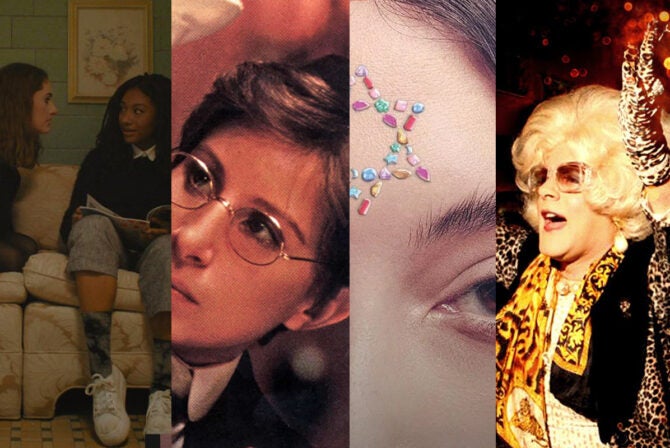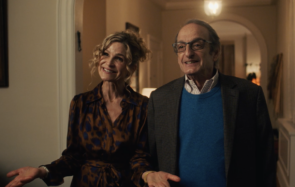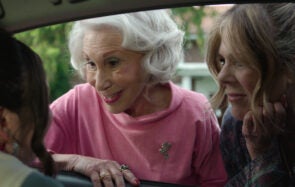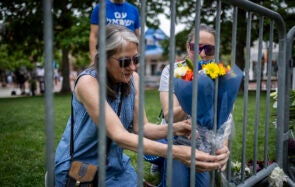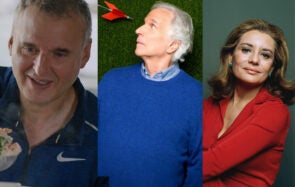As a 16-year-old in St. Louis, I began attending a small Reform synagogue in my neighborhood. I went alone, every Friday night, for two years. I wasn’t Jewish — I wasn’t much of anything at that time — but I felt a pull, a connection with Judaism. I liked the central role of ritual, of generations-long traditions. And I liked the focus on the here and now: Jews seek to repair the world for its own sake, not out of motivation to achieve a heavenly afterlife or avoid a punishing one.
So, I studied with the rabbi, I celebrated holidays, and I took an 18-week class on basic Judaism. At the end of those two years, at 18, I formally converted.
I had learned so much in that time, but the most important part to me, the energizing factor that told me this was the right path, was the connection I felt on that first Friday night. This congregation was a family. This religion was a family. After only a few weeks, a very kind man named Harvey began saying the blessing over the children for me, along with his two daughters. He did this every week for as long as I attended. Judaism was an unconditionally welcoming community, and I knew I was meant to be a part of it.
As a college student struggling with depression and anxiety, connection was much more difficult to find. Like most people with mental health challenges, I spent most of the time trying to appear normal. I found a great group of friends, and a wonderful Hillel, but those connections were based on positives. It’s a lot harder to find people who are open to sharing their struggles, and I wasn’t prepared to make the first move.
So, I managed alone. Not even my closest friends knew I nearly dropped out, just a few months away from graduation. Getting older, crossing milestones, opened the door for incredible experiences, but it also made clear that adulthood was a time of independence. There was no more blessing over the children. And asking for help felt childish.
I know now this is a flawed assumption. The older we get, the more shared experiences we have with those around us. Slowly, by reading stories of others’ mental health struggles, by listening to brave people talk about the darkness they walked through, by simply experiencing more of life, my perspective changed. Maybe this wasn’t something that needed to stay hidden just because it was hard.
I started group therapy, which is a more comfortable setting than individual for those who need help but would rather not be the sole focus of a session. It was incredible to hear similar challenges from such a varied group of people. Even when the circumstances were outwardly different (Jeff was dealing with intermittent homelessness, Tia’s anxiety wouldn’t let her believe she’d live to 30, Justin struggled with addiction), the feelings were the same: helplessness, hopelessness, fear and a desperate desire to be normal. We hardly ever had answers to each other’s problems, but we slowly built a positive community from them. And because we each told our difficult stories, a room full of people felt a little less alone.
As a writer, I have tried to combine an optimistic vision of a compassionate community with the realistic isolation that so often accompanies mental illness. I have spent time in both worlds, as so many of us do. I believe literature is a powerful tool to foster understanding in our society of those hardships that are never shared, which has fueled my creation of three novels on mental health. I have tried to create flawed yet sympathetic characters who form lasting bonds based on the traumas that unite them. It’s not easy, and there aren’t always happy endings, but in a world that expects us to be happy, productive and “normal,” those connections can be life-saving.
As an adult in a time where mental health is becoming less stigmatized, it’s easier for me to reach out and make connections. As a Jew, in a community where surviving together through trauma is a cornerstone of our experience, I have learned the power of sharing stories. It may always be easier to form bonds based on positive commonalities, but connections are often more meaningful when we expose our hidden selves and bring the truth of our hardships to light. Each story we share not only lessens our burden, but also tells those who are struggling they are not alone.
When I think back to the beginning of my journey to Judaism, I can remember how hard it was. How strange it seemed to some people. How behind I felt, not knowing the Hebrew prayers or the history and meaning behind the service. How I wanted to instantly fit in. But the memories that fill my mind without even trying are those of community. The family I made, and the blessings I received. Somehow I did fit in, even on that first Friday night. Hazak, hazak, venit’hazek. Be strong, be strong, and may we strengthen each other. May we continue to speak and ease the suffering around us. May we continue to build that essential community, to repair the world.



